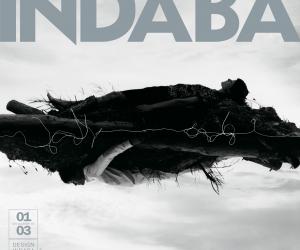First Published in

David Doubilet first began diving at the age of 10. As a childhood asthmatic, he found being underwater "an incredible escape". It helped him breathe, freeing him from a daily struggle for oxygen.
His first adventures beneath the ocean took place, not in some tropical paradise but in the dark and murky waters off the coast of New Jersey where his family had a summer home and where he now lives. Nevertheless, Doubilet saw enough to captivate him and lead to a career that now sees him firmly established as one of the world's top underwater photographers with the enviable title of Contributing Photographer-in-Residence at National Geographic.
"Putting on a mask," he says, " is a passport to the rest of the planet, the majority of the planet." Doubilet has shot over 60 stories for National Geographic and won many awards in a 30-year career. He compares himself to "a hunter, going after prey, searching and finding".
Doubilet works with his partner and future wife, Jennifer Hayes, a photojournalist and marine biologist. Some of their most famous pictures have been of the Great White Shark, a creature Doubilet calls "the ultimate nightmare for humans, nothing else on earth can eat us alive whole. They are the last great predators."
He describes working with sharks as "a tremendous challenge - it's addictive." Most of the time, he photographs them while inside a steel cage lowered into the water: "you open the door, make a picture, then close the door. It's fairly safe - it's always bone against metal and metal always wins, sometimes the sharks break their teeth on the bars." The key thing to remember, apparently, is "to know where your hands and elbows are at all times." But there's always that element of danger: "To deal with sharks constantly looking over your shoulder is like playing in traffic."
Floating in a cage with sharks snapping all around would be as close as most of us would want to get to the creatures but, in search of that ultimate shot, Doubilet uses another, potentially more dangerous technique. A colleague, Joe Stan Campiano, devised a means of getting right inside those terrifying jaws: a camera is attached to a long pole, at the other end the photographer looks down through goggles with a towel over his head to keep out the ambient light. He leans over the edge of the boat and lowers the contraption into the mouth of a passing Great White. "The trick is to put the camera into its mouth and then withdraw it," Doubilet explains, "but if you're not careful the shark will eat the camera or pull you out of the boat, or punch a hole in the dome and ruin the film."
So what makes a great underwater photograph? "The hardest thing is to have any kind of behavioural work in pictures underwater - mating, territorial disputes, eating. That has a lot to do with my presence, my size, and the tremendous amount of noise I'm making. What you're looking for is an emotion or a movement. You try to simplify things and use elements like the colour of the water to help understand the picture but the creatures themselves are great pieces of design. There are colours underwater that are unimaginable. It's like going into a dark room where everybody's wearing the most beautiful clothes but you can't see them. Underwater, the spectrum disappears, so bringing down a flash is like bringing down a bottle of sunlight - something that looks blue is actually pink."
Doubilet and Hayes travel the world on assignments that can take weeks. Typically, he will shoot 500 rolls of film on one story. The majority of time is spent waiting, often in vain. "You're under terrible pressure," Doubilet says. "Imagine you were trying to photograph subjects that hate to have their picture taken, would run away or point their asses to the camera at the best of times, you couldn't pay them, you can barely bribe them, you can't even talk to them, that you had around 15 minutes a day to work with them and you never knew when they were going to show up. Waiting for a shark on a boat with a crew is the world's most expensive taxi. It's nice working for National Geographic because it's not our money but the fear is there - not of being eaten by a shark but of being eaten by the editor if you don't get a picture. Physics and physiology conspire against photography in the ocean."
Added to that are the inherent dangers of working underwater: "Mostly it's not as dangerous as people think but if you're diving deep you have a lot of problems with the bends and working with sharks there's always a possibility that other things will go wrong."
But despite all the problems, and all the waiting, eventually, something extraordinary will happen and that, says Doubilet, makes it all worthwhile: "when everything comes together, it's wonderful. It's the best thing on the planet."









